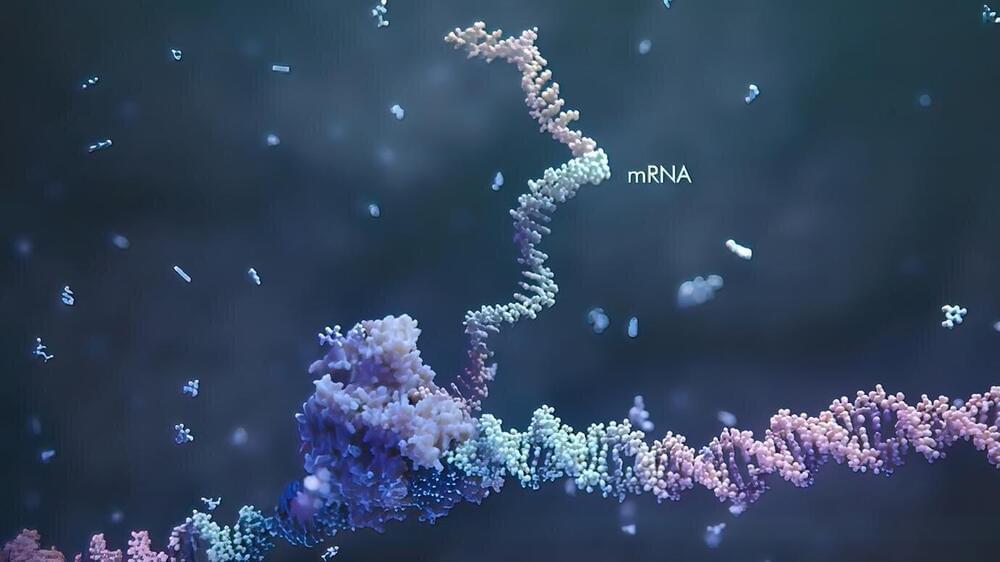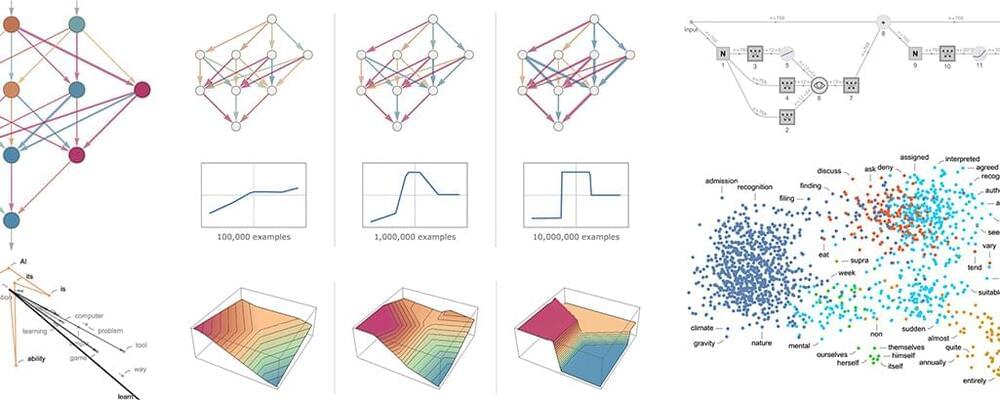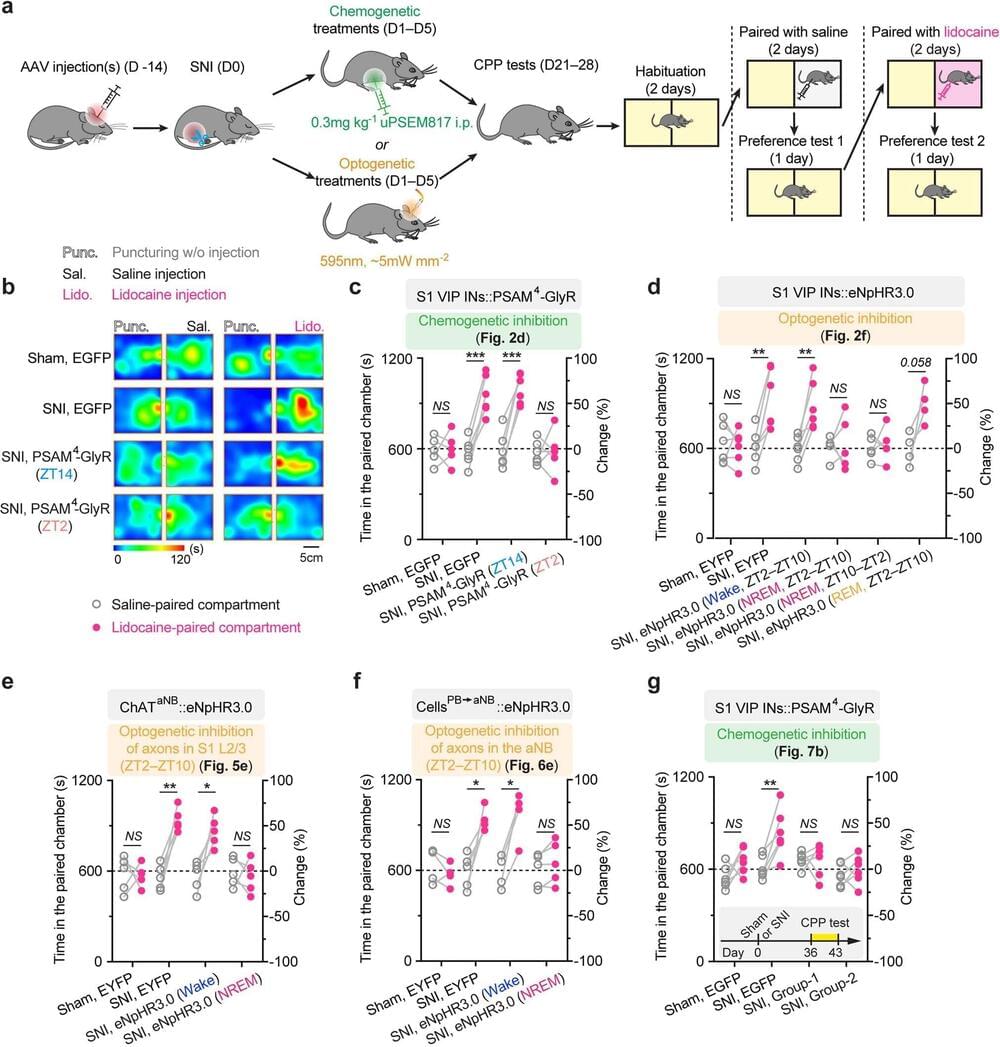Yes, it’s possible. Using genomic technologies and specialized mouse models to develop preventative therapies, JAX scientists aim to stop Alzheimer’s before it starts.



University of Chicago scientists have discovered a new wrinkle in our understanding of how our genes work. The team, led by Chuan He, the UChicago John T. Wilson Distinguished Service Professor of Chemistry, Biochemistry and Molecular Biology, shed light on a longstanding puzzle involved in a common way our genes are modified that is known as RNA methylation.
Published Jan. 27 in Science, the finding could have implications for gene therapies for disease, as well as our picture of gene expression, development, and evolution.
For more than a decade, Chuan He’s laboratory has been focused on trying to unravel the puzzle of a phenomenon called RNA methylation, which we are increasingly understanding plays a key role in our bodies and lives—everything from cancer to PTSD to aging.
Are you ready to explore the future and imagine the incredible technological advancements that await us in the year 2090? From Neural Interfaces to Hypersonic Vactrains, Photosynthetic Humans, Fully Immersive Virtual Realities, Self-Healing Materials, and Genetic Enhancement, our world will look nothing like it does today.
Imagine controlling devices with your thoughts through Neural Interfaces, traveling from New York to Los Angeles in just 30 minutes with Hypersonic Vactrains, fueling your body with the sun with Photosynthetic Humans, immersing yourself in fully realistic virtual environments, repairing materials instantly with Self-Healing Materials, and enhancing your genetics for better physical and mental capabilities.
The future is truly exciting and we can’t wait to explore it with you! So hit that like and subscribe button and don’t forget to hit the bell icon to stay updated with our latest videos.
Let’s dive into the future together!
Thanks for stopping by at Future Tech Enthusiast!
Check out our website at: https://futuretechenthusiast.com/


The behavioral disorders observed in autism are associated with a multitude of genetic alterations. Scientists from the Hector Institute for Translational Brain Research (HITBR) have now found another molecular cause for this condition. The transcription factor MYT1L normally protects the molecular identity of nerve cells. If it is genetically switched off in human nerve cells or in mice, the functional changes and symptoms typical of autism occur. A drug that blocks sodium channels in the cell membrane can reverse the consequences of MYT1L failure and alleviate the functional and behavioral abnormalities in mice.
Disorders from the autism spectrum (ASD, autism spectrum disorders) are not only manifested by impairments in social interaction, communication, interest formation, and by stereotypical behavior patterns. This is often accompanied by other abnormalities such as epilepsy or hyperactivity.
Scientists are intensively searching for the molecular abnormalities that contribute to this complex developmental disorder. A multitude of genetic factors that influence the molecular programs of the nerve cells have already been linked to the development of autism.
A decades-old drug used to treat urinary tract infections (UTIs) appears to have saved the life of a man infected by the “brain-eating” amoeba — and his case highlights the tremendous potential of a new type of genetic sequencing technology.
The patient: In 2021, a 54-year-old man was admitted to a Northern California hospital following a seizure. After an MRI revealed a mass in his brain, he was transferred to the UCSF Medical Center, where the mass was biopsied.
Based on the biopsy, doctors suspected that the patient’s brain was being attacked by an amoeba — a highly dangerous and unusual infection. They sent a sample to the University of Washington, Seattle, where a PCR test identified the pathogen as Balamuthia mandrillaris — a deadly brain-eating amoeba that kills more than 90% of people it infects.

𝐓𝐡𝐞 𝐧𝐞𝐨𝐜𝐨𝐫𝐭𝐞𝐱 𝐬𝐭𝐚𝐧𝐝𝐬 𝐨𝐮𝐭 𝐚𝐬 𝐚 𝐬𝐭𝐮𝐧𝐧𝐢𝐧𝐠 𝐚𝐜𝐡𝐢𝐞𝐯𝐞𝐦𝐞𝐧𝐭 𝐨𝐟 𝐛𝐢𝐨𝐥𝐨𝐠𝐢𝐜𝐚𝐥 𝐞𝐯𝐨𝐥𝐮𝐭𝐢𝐨𝐧. 𝐀𝐥𝐥 𝐦𝐚𝐦𝐦𝐚𝐥𝐬 𝐡𝐚𝐯𝐞 𝐭𝐡𝐢𝐬 𝐬𝐰𝐚𝐭𝐡 𝐨𝐟 𝐭𝐢𝐬𝐬𝐮𝐞 𝐜𝐨𝐯𝐞𝐫𝐢𝐧𝐠 𝐭𝐡𝐞𝐢𝐫 𝐛𝐫𝐚𝐢𝐧, 𝐚𝐧𝐝 𝐭𝐡𝐞 𝐬𝐢𝐱 𝐥𝐚𝐲𝐞𝐫𝐬 𝐨𝐟 𝐝𝐞𝐧𝐬𝐞𝐥𝐲 𝐩𝐚𝐜𝐤𝐞𝐝 𝐧𝐞𝐮𝐫𝐨𝐧𝐬 𝐰𝐢𝐭𝐡𝐢𝐧 𝐢𝐭 𝐡𝐚𝐧𝐝𝐥𝐞 𝐭𝐡𝐞 𝐬𝐨𝐩𝐡𝐢𝐬𝐭𝐢𝐜𝐚𝐭𝐞𝐝 𝐜𝐨𝐦𝐩𝐮𝐭𝐚𝐭𝐢𝐨𝐧𝐬 𝐚𝐧𝐝 𝐚𝐬𝐬𝐨𝐜𝐢𝐚𝐭𝐢𝐨𝐧𝐬 𝐭𝐡𝐚𝐭 𝐩𝐫𝐨𝐝𝐮𝐜𝐞 𝐜𝐨𝐠𝐧𝐢𝐭𝐢𝐯𝐞 𝐩𝐫𝐨𝐰𝐞𝐬𝐬. 𝐒𝐢𝐧𝐜𝐞 𝐧𝐨 𝐚𝐧𝐢𝐦𝐚𝐥𝐬 𝐨𝐭𝐡𝐞𝐫 𝐭𝐡𝐚𝐧 𝐦𝐚𝐦𝐦𝐚𝐥𝐬 𝐡𝐚𝐯𝐞 𝐚 𝐧𝐞𝐨𝐜𝐨𝐫𝐭𝐞𝐱, 𝐬𝐜𝐢𝐞𝐧𝐭𝐢𝐬𝐭𝐬 𝐡𝐚𝐯𝐞 𝐰𝐨𝐧𝐝𝐞𝐫𝐞𝐝 𝐡𝐨𝐰 𝐬𝐮𝐜𝐡 𝐚 𝐜𝐨𝐦𝐩𝐥𝐞𝐱 𝐛𝐫𝐚𝐢𝐧 𝐫𝐞𝐠𝐢𝐨𝐧 𝐞𝐯𝐨𝐥𝐯𝐞𝐝.
The brains of reptiles seemed to offer a clue. Not only are reptiles the closest living relatives of mammals, but their brains have a three-layered structure called a dorsal ventricular ridge, or DVR, with functional similarities to the neocortex.
The neocortex stands out as a stunning achievement of biological evolution. All mammals have this swath of tissue covering their brain, and the six layers of densely packed neurons within it handle the sophisticated computations and associations that produce cognitive prowess. Since no animals other than mammals have a neocortex, scientists have wondered how such a complex brain region evolved.
Now, however, by analyzing molecular details invisible to the human eye, scientists have refuted that view. By looking at patterns of gene expression in individual brain cells, researchers at Columbia University showed that despite the anatomical similarities, the neocortex in mammals and the DVR in reptiles are unrelated. Instead, mammals seem to have evolved the neocortex as an entirely new brain region, one built without a trace of what came before it. The neocortex is composed of new types of neurons that seem to have no precedent in ancestral animals.

One question for Brad Ringeisen, a chemist and executive director of the Innovative Genomics Institute. Founded by Nobel Prize-winning biochemist Jennifer Doudna, it aims to bridge revolutionary gene-editing tool development to affordable and accessible solutions in human health and climate.
Will CRISPR cure cancer?
We’re always thinking about: What are those targets in the future? Cancer is one of those things. The biggest impact is going to be what’s called systemic delivery, or in vivo delivery. There’s been one example of this in the community right now—to treat a liver disease. Intellia Therapeutics, a biotech company, has shown that you can actually intravenously apply CRISPR-Cas9 treatment. (CRISPR is the guide RNA, the targeting molecule, and Cas9 is the cutting molecule that edits DNA.) It can go to the liver and target the liver cells, and make edits at a high enough efficacy to treat genetic liver disease. The problem is that the liver is the easiest. It’s like the garbage can of the body. Pretty much anything that you put into the body is ultimately going to find its way to the liver. So that’s absolutely the easiest tissue to deliver to. But trying to deliver to a solid tumor, or to the brain, is much more difficult.


A team of neuroscientists at the New York University School of Medicine has found a link between chronic pain and overactive pyramidal neurons during sleep periods. In their study, published in the journal Nature Neuroscience, the group conducted experiments with injured mice experiencing chronic pain.
Prior research has shown that there is often a link between chronic pain and insomnia. After experiencing a neural injury of some sort, many patients are left with some degree of lasting pain. This tends to result in poor sleep and sometimes insomnia. Once that happens, the pain becomes worse, and over time becomes chronic. But why this happens has been a mystery. In this new effort, the team in New York conducted experiments with mice hoping to find the answer.
The work involved inducing chronic pain in mice by damaging two of the three branches that make up a group of sciatic nerves. Doing so led to skin sensitivity in the legs. The researchers scanned the brains of each of the mice before and after the damage. They observed that pyramidal neurons in the part of the cerebral cortex responsible for sensation processing in the skin became more active. And over the course of several weeks, the activity increased, peaking during non-REM sleep.